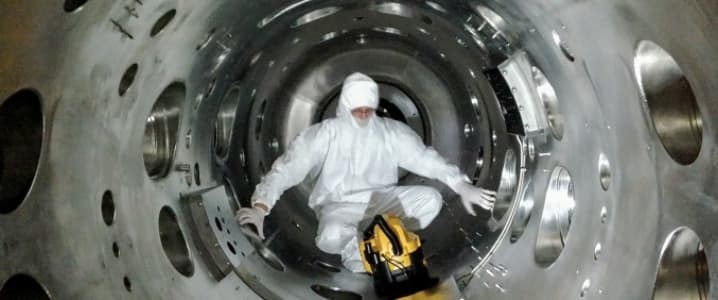It could not be more ironic: carbon dioxide, the greenhouse gas responsible for climate change, may be able to help the renewables energy industry in the future. Scientists have discovered a way to turn carbon dioxide into ethanol with a single catalyst, totally by accident.
The accidental discovery, however, may have huge implications on balancing the power grid supplied by intermittent renewable sources, the scientists say, by creating a way to store excess electricity generated from wind and solar.
The carbon dioxide-to-ethanol reaction uses low-cost materials, and can be conducted at room temperature—and more importantly, the researchers believe it could be scaled up to industrial-level applications.
The ethanol obtained from carbon dioxide can be used in the ethanol fuel for cars. Meanwhile, capturing the carbon dioxide can also prevent at least a small portion of the greenhouse gas going to the atmosphere, the scientists say.
The world has now exceeded the 400 parts per million (ppm) threshold—for good—for carbon dioxide emissions. Last month, when carbon dioxide is typically at its minimum, the monthly value did not fall below 400 parts per million as is normally the case. As such, it will not drop below that mark any time soon—at least not in our lifetimes, scientists warn.
So, ironic or not, scientists finding ways to turn carbon dioxide into ethanol in a room-temperature, low-cost electrochemical reaction may come to the rescue of the earth’s climate, and possibly help the renewables industry store the electricity generated by variable sources such as solar and wind.
Scientists at the Department of Energy’s Oak Ridge National Laboratory made the random discovery back in 2014, and published their study last month, after having tested the reaction multiple times at their lab. Related: Oil Heavyweights Worry About Future Oil Supply
The researchers used nano-technology, and found out that nano-spike catalysts convert carbon dioxide directly into ethanol.
“Ethanol was a surprise -- it’s extremely difficult to go straight from carbon dioxide to ethanol with a single catalyst,” lead scientist Adam Rondinone said in the Oak Ridge National Laboratory’s statement.
The nano-catalysts have a yield of around 63-65 percent, which means that you don’t waste much in the process, and the majority is actually converted into ethanol, Rondinone noted in a YouTube video.
In addition, the reaction needs only room temperature, so it can be turned on and off very easily, the scientist goes on explaining.
Regarding potential industrial-scale applications of this process, Rondinone said: “A process like this would allow you to consume extra electricity when it’s available to make and store as ethanol. This could help to balance a grid supplied by intermittent renewable sources.” Related: Why Oil Could Head Back To $90 Sooner Than Thought
The scientist elaborated a bit more on the power grid and renewable industry implications in an interview with CBS News.
ADVERTISEMENT
“Utilities are always attempting to balance generation versus load, producing versus using. We’re proposing this as an opportunity to balance on the load side. If there’s extra energy, it can be converted to ethanol and distributed and used with our current system.”
The carbon dioxide-to-ethanol direct conversion is a major scientific breakthrough. In theory, it would be a low-cost, easily controllable electrochemical reaction. The question is, can it really be scaled up to industrial level so as to become an efficient means of balancing the grid?
By Tsvetana Paraskova for Oilprice.com
More Top Reads From Oilprice.com:
- Only Sentiment Matters: Why Oil Prices Are Heading Up Until November
- Oil Titans Differ On Whether Prices Will Spike Or Remain Low
- The Drone War Is On: Australian Startup Beats Google, Amazon

















